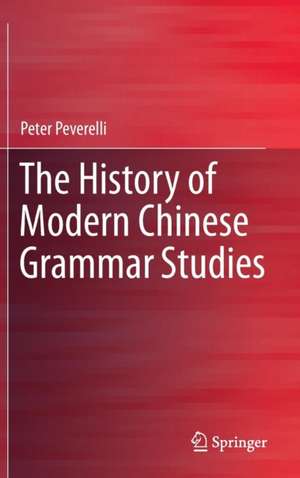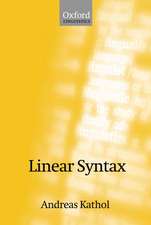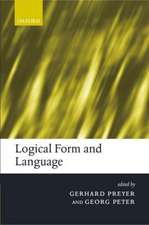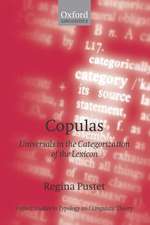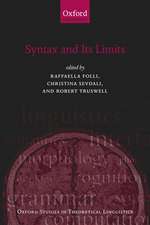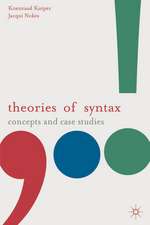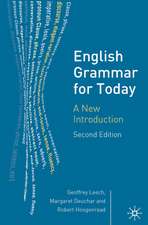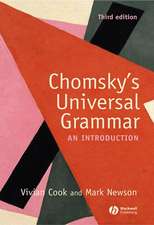The History of Modern Chinese Grammar Studies
Autor Peter Peverellien Limba Engleză Hardback – 13 apr 2015
| Toate formatele și edițiile | Preț | Express |
|---|---|---|
| Paperback (1) | 580.17 lei 6-8 săpt. | |
| Springer Berlin, Heidelberg – 9 oct 2016 | 580.17 lei 6-8 săpt. | |
| Hardback (1) | 564.15 lei 3-5 săpt. | +21.98 lei 4-10 zile |
| Springer Berlin, Heidelberg – 13 apr 2015 | 564.15 lei 3-5 săpt. | +21.98 lei 4-10 zile |
Preț: 564.15 lei
Preț vechi: 613.21 lei
-8% Nou
Puncte Express: 846
Preț estimativ în valută:
107.96€ • 117.23$ • 90.69£
107.96€ • 117.23$ • 90.69£
Carte disponibilă
Livrare economică 01-15 aprilie
Livrare express 15-21 martie pentru 31.97 lei
Preluare comenzi: 021 569.72.76
Specificații
ISBN-13: 9783662465035
ISBN-10: 3662465035
Pagini: 169
Ilustrații: XII, 204 p. 8 illus.
Dimensiuni: 155 x 235 x 17 mm
Greutate: 0.49 kg
Ediția:2015
Editura: Springer Berlin, Heidelberg
Colecția Springer
Locul publicării:Berlin, Heidelberg, Germany
ISBN-10: 3662465035
Pagini: 169
Ilustrații: XII, 204 p. 8 illus.
Dimensiuni: 155 x 235 x 17 mm
Greutate: 0.49 kg
Ediția:2015
Editura: Springer Berlin, Heidelberg
Colecția Springer
Locul publicării:Berlin, Heidelberg, Germany
Public țintă
ResearchCuprins
Preface of the revised edition.- Acknowledgements.- Introduction.- The Mashi Wentong.- The period of Imitation (1898-1930).- Innovation and Maturation (1930 - 1949).- The discussion on 'Innovation of Grammar'.- The Age of Standardization.- Summary and Conclusions.- APPENDIX.
Textul de pe ultima copertă
This book discusses the way Chinese scholars developed a national grammar. Chinese didn’t develop grammar until China’s contact with Western grammar books in the 19th Century. The first indigenous grammar was published in 1889. It included some traditional notions, but mainly imitated European grammar. It was followed by a number of other similar works. To move away from this imitation, a group of grammarians started to look into the Chinese tradition of commenting on classics. This led to a variety of alternative grammars. After the war, Western linguistics started to gain influence in China. With the establishment of the PRC in 1949, efforts began to have a standard grammar adopted nationwide. The first attempt at such a grammar was published in 1956. This book spans the period 1898 – 1956.This book combines historiography and linguistics to distinguish different periods in the timespan covered. It shows how the development of a national grammar cannot be studied separately from language policies and discussions on the national language. The description of each period includes a general introduction of the relevant events in that period and a treatment of the major works of grammar.
Caracteristici
A must-have for all university libraries, since there is no other book on this topic in a Western language Highlights how China adopted and adapted an aspect of Western thought that has been previously ignored: it will appeal to researchers in a number of fields of Chinese studies Adds to our understanding of the definition of a national language and the socio-political consequence of different definitions, making the book appealing to scholars Includes supplementary material: sn.pub/extras
